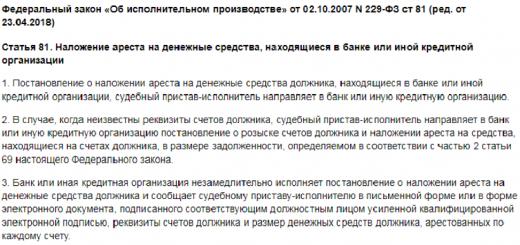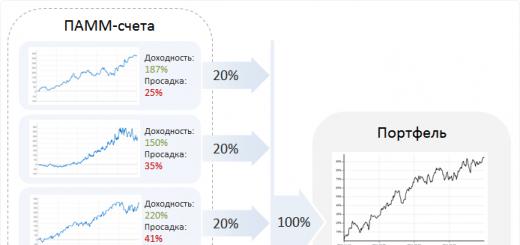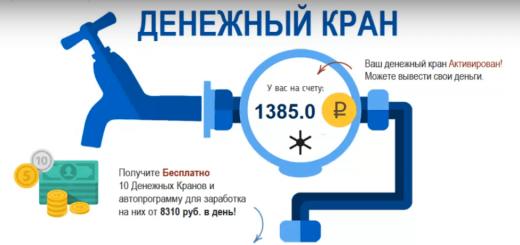What causes the existence of the concepts of “fixed capital” and “fixed production assets”?
Reveal the essence of methods for assessing production assets.
What factors influence the use of fixed assets in industry?
Name the types of depreciation of fixed assets.
What is the essence of accelerated depreciation?
Provide indicators of the use of fixed production assets and models for their calculation.
Describe ways to better use fixed production assets.
Expand the definition and types of modernization of fixed assets.
Topic 4. Raw materials and fuel and energy resources
The role of raw materials and fuel and energy resources in the economy of the country and enterprise. Basic concepts and categories.
Classification of reserves of mineral deposits and their economic assessment.
Fuel and energy balance. Structure. Ways of improvement.
The role of raw materials and fuel and energy resources in the economy of the country and enterprise.
Basic concepts and categories.
Raw materials, materials, fuel and energy are the basis for the normal functioning of an enterprise and the economy of the state as a whole. Thus, for Japan, providing raw materials and fuel and energy resources (FER) is the number one national task, since it does not have sufficient raw materials and fuel and energy resources of its own. In fact, the entire processing industry in Japan runs on imported raw materials and fuel. And if we imagine for a moment such a situation for Japan that access to raw materials and fuel and energy resources will be blocked for some reason, this will be a collapse for the Japanese economy. Perhaps this is why Japanese goods are of the highest quality and competitive on the world market, and the country has a powerful export potential of finished and high-tech products, so that raw materials and fuel and energy resources can be purchased in sufficient quantities.
Russia is in a more advantageous position in this regard. It has significant raw materials and fuel resources, which allows it not only to meet domestic needs, but also to export a fairly significant part of them to various countries.
Russia has a powerful fuel and energy complex. It is a set of enterprises, installations and structures that ensure the extraction and processing of primary fuel and energy resources, their transformation and delivery to consumers in a form convenient for use.
And although the volume of production of some types of fuel has decreased significantly in recent years, which was associated with the general crisis situation in the country, this is still quite enough not only to satisfy domestic needs. Russia still has significant export potential of fuel and energy resources.
Raw materials, materials, fuel, energy - all this refers to objects of labor, i.e. With the help of means of labor, they are exposed to human labor in order to give them the forms and properties that a person needs to satisfy his numerous production and personal needs.
The importance of CTER for the country’s economy at the present stage lies primarily in the following:
The country's satisfaction with its own CITER is a necessary condition for the normal functioning and development of the country's economy and ensuring the economic independence of the state
Material resources, including raw materials and fuel and energy, occupy a significant share in the costs of production and sales of industrial products, therefore their rational use significantly reduces the cost of a unit of production, and therefore its selling price, and contributes to its competitiveness
The export of these resources, unfortunately, is one of the main sources of foreign exchange
They are the basis for the development of heavy industry, and therefore for expanded reproduction.
Raw materials represent the totality of the objects of labor available in the country, which are used directly for the production of various industrial products.
Beneath the Raw Materials(raw material) is understood as any object of labor for the extraction or processing of which labor was expended and which, under its influence, underwent certain changes.
To raw materials usually include products from the mining industry (ore, oil, coal, sand, crushed stone) and agricultural products (grain, potatoes, beets), and materials include products from the manufacturing industry (ferrous and non-ferrous metals, cement, flour, yarn).
There are basic and auxiliary materials.
Main are called materials that in natural form are part of the finished product, constituting its material basis.
Auxiliary materials are not included in the finished product, but only contribute to its formation.
Fuel and energy by their economic nature they belong to auxiliary materials, but due to their special significance they are allocated to an independent group of resources.
There are potential and real fuel and energy resources (FER).
Potential fuel and energy resources- this is the volume of reserves of all types of fuel and energy that a particular economic region, or the country as a whole, has.
Real fuel and energy resources in a broad sense, it is the totality of all types of energy used in the country's economy.
In a more “narrow” sense, the used fuel and energy resources mean the following:
1. Natural fuel and energy resources(natural fuel)- coal, shale, peat, oil, natural and useful gas, underground gasification gas, firewood; natural mechanical energy of water, wind, nuclear energy; fuel from natural sources - the sun, underground steam and thermal waters.
2. Fuel processing products(coke, briquettes, petroleum products, artificial gases, enriched coal, its screenings, etc.).
3. Secondary energy resources, obtained in the main technological process (fuel waste, flammable and hot gases, waste gas, physical heat of production products, etc.).
All types of raw materials consumed by the national economy are divided into two large groups from an economic point of view:
I. Industrial raw materials, which is mined and produced industrially and consumed mainly by heavy industries.
II. Agricultural raw materials, which is produced in agricultural sectors and consumed mainly by light and food industries.
Industrial raw materials, in turn, are divided into two subgroups:
raw materials of mineral origin(mineral raw materials), i.e. raw materials obtained from the bowels of the earth;
artificial raw materials, those. raw materials, materials obtained artificially.
The most numerous group of natural raw materials is of mineral origin. It constitutes the mineral resource base of the industry and determines the development of such key industries as ferrous and non-ferrous metallurgy, fuel, electric power, etc.
Classification of reserves of mineral deposits and their economic assessment.
The mineral resource base of industry is the mineral resources in the bowels of the earth, identified as a result of geological exploration. Thus, the basis of the mineral resource base is the identified mineral deposits.
Mineral resources, which at a given level of development of science and technology can be quite effectively extracted from the bowels of the earth and used in industrial production, are called minerals.
Minerals used by industry are usually divided into the following three groups:
I. Fossil fuels (coal, oil shale, peat,
oil, natural gas).
II. Mineral minerals (ferrous, non-ferrous, noble and rare metals).
III. Non-metallic minerals (raw materials for the chemical industry, construction materials, non-metallic raw materials for ferrous metallurgy).
From an economic point of view, any deposit is characterized primarily by the quality of the mineral and its quantitative reserves.
According to the degree of exploration and study, mineral reserves are divided into three categories:
Category A reserves - these are fully studied, explored and prepared for production; they are intended for the operational work of enterprises, as well as for the design and construction of enterprises.
Category B reserves – these are geologically based, relatively explored and delineated by mine workings and boreholes. They can be taken as a basis to justify the design of capital construction of mining enterprises.
Category C reserves less studied, they require clarification with the help of detailed geological exploration work; they are used for long-term planning of the development of the mining industry and geological exploration work.
In addition, reserves of mineral deposits are divided into two groups: geological and industrial.
Geological:
Balance sheet - reserves that, given the level of development of science and technology, can be extracted from the bowels of the earth with sufficient efficiency.
Off-balance sheet – reserves that at this stage, from an economic point of view, are not feasible to extract from the bowels of the earth. With the development of science and technology, with the advent of new, more progressive technologies, off-balance sheet reserves can be transferred to the on-balance sheet category.
Industrial stocks– these are balance reserves minus operational or design losses. The lower the operational losses, the more balance reserves can be extracted, the more rationally the mineral deposits are used.
Deposits of any mineral have different economic significance. To identify the best, an economic assessment is carried out. It is preceded by geological and technological assessments.
Geological assessment includes general information about the deposit, geological characteristics of the area and the geological structure of the fossils.
Based on the geological assessment, the following are determined: geological reserves; quality of minerals; mining and geological conditions of the deposit; depth of development; reservoir thickness, etc.
Technological assessment is intended to establish the technological feasibility of developing the field, the possible scale of production, the method of opening, preparation, etc.
The economic assessment of deposits is made on the basis of geological and technological assessment data and determines the following indicators during the operation of a particular deposit:
General and specific capital investments
Costs of production, enrichment and sales of products
Profitability index
Labor productivity
Profit and profitability
Payback period
Net present value
Fuel and energy balance. Structure. Ways of improvement.
Fuel and energy balance– a comprehensive description and mutual linkage of the production and use in the national economy and everyday life of fuel and energy resources and all types of energy produced from them (electricity, heat, etc.).
There is a fuel balance, which reflects all types of fuel, and a fuel and energy balance, which, along with fuel, takes into account all produced and used energy (electricity, compressed air energy, etc.).
Resources(fuel production, electricity generation, nuclear and geothermal electricity generation, imports, other revenues and balance at the beginning of the year)
Distribution(total consumption is shown, including for the generation of electricity, heat and compressed air, for production, technical and other needs; exports and balance at the end of the year)
The fuel and energy balance gives a general idea:
About the size of production and consumption of fuel and energy in the country
Which basin or region, in what quantities, what type and grade of fuel can be produced in the planned period
Each type of fuel has a different calorific value - from 2000 kcal/kg and above.
For the purposes of planning production and consumption when calculating energy resources, the concept of equivalent fuel with a calorific value of 7000 kcal/kg was introduced.
The thermal equivalent of any fuel is determined by the formula:
K =Q/7000, (17),
where Q is the heat of combustion of any fuel.
The fuel and energy balance is developed for different levels: National economy as a whole, a republic or region, city or district.
It can be compiled in two ways: based on the use of specific fuel consumption rates and the heat balance method. In practice, the first method is most widespread.
Structure of the fuel and energy balance – composition of fuel and energy included in the balance, and their share in the total volume of production and consumption. The country's economy and production efficiency largely depend on the structure of the fuel and energy balance. This is due to the fact that different types of fuel and energy differ significantly from each other in their efficiency. It is believed that natural gas is the most economical type of boiler and furnace fuel. The cost of generating 1 kW/h of electricity at hydroelectric power plants, thermal power plants and nuclear power plants is different. So far, the cheapest electricity is generated at hydroelectric power plants, then at nuclear power plants, and the most expensive electricity at thermal power plants.
The main directions for improving the fuel and energy balance:
Wider use of open-pit coal mining as a more progressive method compared to underground, which will reduce the cost of its production
Deeper technological processing of oil, which will provide the chemical industry with the required quantities of advanced raw materials.
Ultimately, the implementation of these areas will improve the structure of the fuel and energy balance, and therefore meet the needs of the national economy and everyday life for fuel and energy at lower costs.
The development of a fuel and fuel-energy balance is necessary for:
Studying the modern structure of production and consumption of fuel and energy
Determining whether fuel and energy needs match their resources
Analysis of the structure of the fuel and energy balance with the aim of improving it
Determining the necessary capital investments for the development of the country's fuel and energy complex
Identifying the possibility and feasibility of exporting and importing fuel and energy resources, etc.
Thus, the fuel and energy balance and its development are important elements and economic policy state and its subjects.
The main directions for improving the structure of the country’s fuel and energy balance at the present stage:
Increasing the share of natural gas in the country's fuel balance
Development of nuclear power industry
Wider use of the open-pit method of coal mining, as it is more progressive and cheaper compared to underground, which will reduce the cost of coal mining
Deeper technological processing of oil, which will provide the chemical industry with advanced raw materials in the required quantities.
The question Needs answers... plz given by the author Olenka the best answer is 1. Divisions into social groups in society are caused by such characteristics as: Position in the system of division of labor; Family relationships; Solving production problems; Place of residence; Ethnicity and nationality; Sex and age characteristics of individuals; Interethnic, international, interstate relations; Morphophysiological and physical features, etc.
2. Oligarchs, bureaucrats, the middle class and the lower strata of society (workers and peasants, the unemployed, pensioners, the homeless, the poor), arose in connection with the formation of capitalism, with the emergence of private property in Russia and with the stratification of society.
3. The presence of private property divides society into owners of the means of production and workers. Accordingly, who owns the means of production receives profit from their use, and workers regular salary. Hence the social structure of the rich and ordinary workers.
Market relations divide society into producer and consumer. There is also a lot of competition between manufacturers. Which also divides society. There are goods that only certain groups of society can purchase; they are not available to lower strata of the population.
4. The Russian middle class are people who, thanks to their education and professional qualities, were able to adapt to the conditions of modern market economy and provide their families with a time-appropriate level of consumption and lifestyle.
5. The concept of social differentiation, we can say that it means not just the identification of any groups, but also a certain inequality between them in terms of their social status, the scope and nature of rights, privileges and responsibilities, prestige and influence. Is this inequality removable? There are different answers to this question. For example, the Marxist doctrine of society is based on the necessity and possibility of eliminating this inequality as the most striking manifestation of social injustice. To solve this problem, you first need to change the system economic relations, eliminate private ownership of the means of production. In other theories, social stratification is also regarded as evil, but it is irremovable. People must accept this situation as inevitable. According to another point of view, inequality is regarded as a positive phenomenon. It makes people strive to improve social relations. Social homogeneity will lead society to destruction. However, many researchers note that in most developed countries There is a decrease in social polarization, the middle strata are increasing and the groups belonging to the extreme social poles are decreasing.
6. Social mobility is the possibility of changing a social stratum. Social mobility can be high or low. An example of high social mobility is the United States of America, and an example of low social mobility is India. The concept of social mobility is close in meaning to the concept of a social elevator. There are such types of social mobility as: Horizontal mobility; Vertical mobility.
Horizontal mobility is the transition of an individual from one social group to another located at the same level (example: moving from an Orthodox to a Catholic religious group, from one citizenship to another).
Vertical mobility is the advancement of a person up or down the career ladder.
DIVERSITY OF SOCIAL GROUPS
As you already know, people unite in the process of their life activities and human society represents many different social groups. Such groups, for example, include a nationality, a nation, a social class, a rural community, a work collective, and a family. Social groups, as can be seen from the examples given, are different in nature, scale, and the role they play in society. What gives grounds to unite such dissimilar communities into the category of “social groups”? The answer to this question is simple: all social groups objectively arise in the course of people’s life activities, regardless of their will and desire. Each social group is characterized by certain connections and common socially significant features. Such characteristics may be nationality, income, power, education, profession, place of residence, religious affiliation, lifestyle, etc.
What causes the existence of social groups? How do people interact in these groups and how do these groups interact with each other? Sociological researchers provide answers to these questions. They explain the emergence and existence of relatively stable social groups primarily by the social division of labor and specialization of activity. (Remember, for example, how in ancient times, in connection with the separation of craft from Agriculture groups of artisans and peasants, urban and rural residents arose in society, how artisans of the same specialty began to unite into a special group - a workshop, how a workshop leadership appeared.) Sociologists believe that even today the division of human activity into main types (economic, political, etc.) ...) determines the diversity and size of social groups, their position in society. Thus, the existence of rich, poor and middle strata of the population is associated with economic activity, and with political activity - the existence in society of leaders and masses, governed and governing.
The existence of various social groups is also due to the historical diversity of living conditions, culture, social norms and values. This, in particular, explains the existence of ethnic and religious groups in modern society.
Is it possible to somehow classify all social groups existing in society?
Scientists have been trying to answer this question since ancient times. However, to this day there is no generally accepted typology of social groups. One of the principles of classification is the conditional division of social groups according to the number of participants into large and small. This is the classification you were introduced to in basic school.
As you remember, small groups are family, educational, labor associations, interest groups, etc. A small group is distinguished from a large group by the fact that all its participants are united by common activities and are in direct communication with each other.
Often, along with social groups, there are groups of people united by natural characteristics: race, gender, age. They are sometimes called biosocial groups. Such groups of people provide a natural background to their social life. Under certain conditions, natural differences between people can acquire social qualities. For example, in any society there are elderly people, but only at a certain level social development a social group of retirees emerges.
Each person belongs to one of the social groups or occupies some intermediate, transitional position.
An intermediate, borderline state is characterized by marginal (from the Latin marginalis - located on the edge) groups. These include immigrants, the unemployed, the disabled, people without a fixed place of residence and certain occupations (homeless people). A sign indicating a transition to a marginal state is the severance of economic, social and cultural ties with the previous social community and attempts to establish them with a new one. However, having lost contact with their former social group, marginalized people for a long time cannot accept new values and rules of behavior. A striking example of this condition is people who moved from rural areas to the city in search of work, who were cut off from the peasant environment, but who have not yet accepted the values and lifestyle of city dwellers. Finding themselves without roots (family, friendship, culture), they seem to be “hanging in the air.” They, as a rule, perform the simplest, unskilled, often temporary work, and the loss of it threatens them with turning into vagabonds and beggars.
The absence of certain stable connections and norms contributes to the manifestation of social activity and initiative by marginalized people in search of their new place in life. However, the state of uncertainty, “in-betweenness” from time to time causes tension, discomfort, anxiety and even aggressiveness. This is why marginalized individuals can become both the social support of progressive changes in society and the bearers of various anti-democratic tendencies.
DIVERSITY OF SOCIAL GROUPS
As you already know, people unite in the process of their life activities and human society represents many different social groups. Such groups, for example, include a nationality, a nation, a social class, a rural community, a work collective, and a family. Social groups, as can be seen from the examples given, are different in nature, scale, and the role they play in society. What gives grounds to unite such dissimilar communities into the category of “social groups”? The answer to this question is simple: all social groups objectively arise in the course of people’s life activities, regardless of their will and desire. Each social group is characterized by certain connections and common socially significant features. Such characteristics may be nationality, income, power, education, profession, place of residence, religious affiliation, lifestyle, etc.
What causes the existence of social groups? How do people interact in these groups and how do these groups interact with each other? Sociological researchers provide answers to these questions. They explain the emergence and existence of relatively stable social groups primarily by the social division of labor and specialization of activity. (Remember, for example, how in ancient times, in connection with the separation of crafts from agriculture, groups of artisans and peasants, urban and rural residents arose in society, how artisans of the same specialty began to unite into a special group - a guild, how guild leadership appeared.) Sociologists believe that even today the division of human activity into main types (economic, political, etc.) determines the diversity and number of social groups, their position in society. Thus, the existence of rich, poor and middle strata of the population is associated with economic activity, and with political activity - the existence in society of leaders and masses, governed and governing.
The existence of various social groups is also due to the historical diversity of living conditions, culture, social norms and values. This, in particular, explains the existence of ethnic and religious groups in modern society.
Is it possible to classify in any way all social groups existing in society? Scientists have been trying to answer this question since ancient times. However, to this day there is no generally accepted typology of social groups. One of the principles of classification is the conditional division of social groups according to the number of participants into large and small. This is the classification you were introduced to in basic school.
As you remember, small groups are family, educational, labor associations, interest groups, etc. A small group is distinguished from a large group by the fact that all its participants are united by common activities and are in direct communication with each other.
Often, along with social groups, there are groups of people united by natural characteristics: race, gender, age. They are sometimes called biosocial groups. Such groups of people provide a natural background to their social life. Under certain conditions, natural differences between people can acquire social qualities. For example, in any society there are elderly people, but only at a certain level of social development does a social group of retirees arise.
Each person belongs to one of the social groups or occupies some intermediate, transitional position.
An intermediate, borderline state is characterized by marginal (from the Latin marginalis - located on the edge) groups. These include immigrants, the unemployed, the disabled, people without a fixed place of residence and certain occupations (homeless people). A sign indicating a transition to a marginal state is the severance of economic, social and cultural ties with the previous social community and attempts to establish them with a new one. However, having lost contact with their former social group, marginalized people for a long time cannot accept new values and rules of behavior. A striking example of this condition is people who moved from rural areas to the city in search of work, who broke away from the peasant environment, but have not yet accepted the values and lifestyle of city dwellers. Finding themselves without roots (family, friendship, culture), they seem to be “hanging in the air.” They, as a rule, perform the simplest, unskilled, often temporary work, and the loss of it threatens them with turning into vagabonds and beggars.
The absence of certain stable connections and norms contributes to the manifestation of social activity and initiative by marginalized people in search of their new place in life. However, the state of uncertainty, “in-betweenness” from time to time causes tension, discomfort, anxiety and even aggressiveness. This is why marginalized individuals can become both the social support of progressive changes in society and the bearers of various anti-democratic tendencies.
SOCIAL INEQUALITY Different social groups occupy different positions in society. This position, according to sociologists, is determined by unequal rights and privileges, responsibilities and duties, property and income, attitudes towards authority and influence among members of their community. Let's take the following example. From the course on the history of Russia in the 19th century. you know what position in society the nobles, landowners, bourgeoisie, priests, merchants, townspeople, Cossacks, and peasants occupied. At the same time, the position of the peasants was also unequal: state, landowner, monastic and free peasants.
Each social group can be figuratively represented at a certain level of the social ladder: some groups are higher, others are lower.
The division of society into social groups occupying different positions in society is called social differentiation.
Social differentiation, as sociologists say, is characteristic of any society, since in any society there are social groups that differ in their status. In other words, there is inequality - unequal access of representatives of different social groups to such social benefits as money, power, prestige. Even in a primitive community there were elders and leaders who were distinguished by their rights and responsibilities and occupied a higher position compared to the rest of their fellow tribesmen. The further development of mankind contributed to more complex social stratification.
It is customary to distinguish between economic, political and professional differentiation. Economic differentiation is expressed in differences in income, living standards, in the existence of rich, poor and middle layers of the population. The division of society into managers and governed, political leaders and the masses is a manifestation of political differentiation. Professional differentiation can include the identification of different groups in society according to their type of activity and occupation. Moreover, some professions are considered more prestigious than others.
At the same time, it cannot be denied that humanity has been striving for social equality for many years. But is it feasible? Is it possible to achieve equality in a society where social differentiation exists? Or is this just a dream, a myth, a utopia? There is no consensus among scientists on these issues. And this is explained primarily by different understandings of the words “equality” and “inequality”. For example, Marxist theory links inequality to property relations and the exploitation of man by man. Marxists believe that achieving social equality is possible and it is associated with the abolition of private ownership of the means of production.
According to some other theories, social inequality is considered as all significant differences between people that arise in the course of their life. And since these differences are irremovable, social inequality is viewed as an inevitable social phenomenon, and the ideas of building a society of complete social equality as unrealizable and utopian.
In modern society, social equality is increasingly understood as equality before the law, as well as equality of rights and opportunities. The path to achieving such equality is through respect for the rights and human dignity of representatives of all social groups. In a society that proclaims social equality, equal opportunities are created for representatives of all social groups (regardless of gender, race, nationality, class, origin, place of residence) in obtaining education, medical services, in economic and political activities, etc. Thus, representatives of all social groups have equal opportunities when enrolling in higher educational institutions, finding a job, promotion, nomination as a candidate in elections to central or local authorities. At the same time, ensuring equal opportunities does not necessarily imply obtaining the same results (for example, equal salary).
In modern international documents The United Nations (UN) is committed to ensuring equal opportunities for prosperity for people belonging to both present and future generations. This means that meeting the needs of present generations should not compromise the ability left as a legacy for future generations to meet their own needs.
CLASSES OR STRATES? In their totality, social communities form the social structure of society. Sociologists have long tried to identify the basic element of this structure. Many of them considered classes to be such an element. The very concept of “social class” appeared a long time ago. Initially, two classes were identified - poor and rich, i.e., only economic differentiation was taken into account. Later, a division arose into classes of the oppressed and the oppressors. The emergence of classes was associated with political violence. In the 18th century a distributive theory appeared (economist A. Smith, historian F. Guizot), according to which three main classes were distinguished: 1) land owners (feudal lords) receiving rent; 2) owners of capital (bourgeoisie) who receive profits; 3) workers who dispose of their labor and receive wages. In Marxist-Leninist theory, the main feature of the division of society into classes is property relations.
In modern Western sociology, the concept of class is also used (for example, the middle class and the managerial class are distinguished).
But the concept of stratum (Latin stratum - layer) is more universal. The division of society into strata is based on many criteria: income, profession, education, etc.
The social structure of society through the prism of classes and strata looks different. Let's look at some examples. The two main classes are the workers and peasants and the social group is the intelligentsia. This was the structure of Soviet society from the perspective of the Marxist class approach. And here is one of the options for the social stratification of Soviet society in the 80s (groups were distinguished taking into account the following characteristics: power, income level, prestige, education, lifestyle, consumption standards): ruling class (0.7% of the employed population); management specialists (about 3.5%); creative intelligentsia (1.8%); specialists of qualified mental work (18.8%); non-specialist employees (about 5%); industrial working class (22.3%); workers in various non-production and social sphere(19%); service personnel (about 13%); agricultural workers and peasants (15%) and other groups.
It is obvious that taking into account many characteristics when identifying social groups makes it possible to create a more multidimensional picture of social reality, and therefore more accurately identify trends in its changes.
SOCIAL MOBILITY So, each of us can be assigned to one or another social group, each occupies a certain place in the social structure. Is it possible to change this place and how does it happen? The theory of social mobility provides answers to these questions. Social mobility refers to the transition of people from one social group to another. In this case, a distinction is made between horizontal and vertical mobility. Horizontal mobility involves the transition of a person to a group located at the same level as the previous one, for example, a transition from one family to another upon remarriage, from one factory to another, or a change of citizenship. Vertical mobility involves moving from one level of the hierarchy (ladder) to another. At the same time, a person can make both a social ascent (from a small employee to the manager of a large company) and a social descent (from an average entrepreneur to an unskilled worker).
Detailed solution Paragraph § 13 in social studies for 11th grade students, authors L.N. Bogolyubov, N.I. Gorodetskaya, L.F. Ivanova 2014
Question 1. Are the highest rungs of the social ladder accessible to every person? What determines a person’s position in society?
The concept of the social ladder is relative. For officials - one thing, for businessmen - another, for artists - a third, etc. There is no single social ladder.
A person’s position in society depends on education, property, power, income, etc.
A person can change his social position with the help of social elevators - the army, the church, the school.
Additional social elevators are the media, party and social activities, accumulation of wealth, marriage with representatives of the upper class.
Position in society and social status have always occupied an important place in the life of every person. So, what does the position in society depend on:
1. Kinship - status may depend on family lines; children of rich and influential parents undoubtedly have higher status than children born to less influential parents.
2. Personal qualities are one of the most important points on which one’s status in society depends. A person with a strong-willed character, who has the qualities of a leader, will certainly achieve more in life and achieve a higher position in society than a person with the opposite character.
3. Connections - the more friends, the more acquaintances who can really help you get somewhere, the greater the chances of achieving your goal, and therefore gaining a higher social status.
Questions and tasks for the document
Question 1. What types of social stratification is the author talking about?
Economic, political, professional differentiation of society.
If the economic status of the members of a certain society is not the same, if among them there are both haves and have-nots, then such a society is characterized by the presence of economic stratification, regardless of whether it is organized on communist or capitalist principles, whether it is constitutionally defined as a “society of equals” or not . No labels, signs, or oral statements can change or obscure the reality of economic inequality, which is expressed in the difference in income, standard of living, and in the existence of rich and poor segments of the population. If within a group there are hierarchically different ranks in terms of authority and prestige, titles and honors, if there are managers and governed, then regardless of the terms (monarchs, bureaucrats, masters, bosses) this means that such a group is politically differentiated, that whatever it proclaims in its constitution or declaration. If members of a society are divided into different groups according to their type of activity, occupation, and some professions are considered more prestigious than others, and if members of a particular professional group are divided into managers of various ranks and subordinates, then such a group is professionally differentiated regardless of whether bosses are elected or appointed, whether their leadership positions are inherited or due to their personal qualities.
Question 3. Based on the source, can it be argued that social inequality manifests itself in different types of societies?
Yes, you can. Since the phrase “regardless of whether bosses are elected or appointed, whether they get their leadership positions by inheritance or thanks to their personal qualities” indicates that, under a monarchical structure, such a situation could also arise.
SELF-TEST QUESTIONS
Question 1. What causes the existence of social groups in society?
Sociologists explain the emergence and existence of social groups primarily by the social division of labor and the specialization of people's activities. Sociologists believe that even today the division of human activity into main types determines the diversity and size of social groups and their position in society. Thus, the existence of layers of the population that differ in income levels is associated with economic activity, and with political activity - the existence in society of leaders and masses, managers and governed.
The existence of various social groups is also due to the historical diversity of living conditions, culture, social norms and values. This, in particular, explains the presence of ethnic and religious groups in modern society.
Question 2. What social groups exist in modern Russian society? What is the objective basis for their emergence and existence?
The structure of Russian society
Class A. Rich. They are mainly engaged in selling raw materials, accumulating personal capital and exporting it abroad. 5-10% of the population.
Class B1+B2. Middle class. 10-15% of the population. Engaged in class A services in all areas of economic activity (financial, legal, information technology, side-production, necessary for pumping out raw materials).
Subclass B1. Most in their Class. Salaried employees, office, on a good salary.
Subclass B2. Minority in its Class. Owners of their own medium-sized businesses and small private capital.
Class C. Small owners. As such, it is practically absent in Russia.
Class D. The rest of the people, workers, peasants, state employees, military, students, pensioners, the electorate, “men”, “Russians”, cattle, the crowd. 75-80% of the population.
National Subclass D1. Russian and essentially Russified peoples.
National Subclass D2. Tolerant nationalities.
Class E. Human resources of the CIS countries + China.
They arose in connection with the formation of capitalism, with the emergence of private property in Russia and with the stratification of society.
Question 3. How do the variety of forms of ownership and market relations affect the social structure of society?
The presence of private property divides society into owners of the means of production and workers. Accordingly, whoever owns the means of production receives profit from their use, and workers receive their usual wages. Hence the social structure of the rich and ordinary workers.
Market relations divide society into producer and consumer. There is also a lot of competition between manufacturers. Which also divides society. There are goods that only certain groups of society can purchase; they are not available to the lower strata of the population.
Question 4. Who, in your opinion, forms the Russian middle class?
According to the World Bank, the Russian middle class is defined as households whose consumption level is one and a half times higher than the national poverty scale (incomes below living wage), but below the minimum level of consumption of the so-called “world-class middle class”, and amounted to 55.6% in 2008. However, according to calculations by the same World Bank, the average monthly income of a representative of the world-class middle class starts at $3,500 and only no more than 8% of the entire world population can be attributed to this class.
In 2009, the World Bank estimated that Russia's world-class middle class had shrunk by a quarter from its pre-crisis peak of 12.6% to 9.5%.
A very large part of the Russian middle class (approximately 40%) is the “old middle” class, that is, owner-entrepreneurs. As for intellectuals, they are largely relegated to a lower stratum.
Question 5. What points of view exist on the possibility of achieving equality and justice in a society where there is social differentiation?
In modern society, social equality is increasingly understood as equality before the law, as well as equality of rights and opportunities. The path to achieving such equality is through respect for the rights and human dignity of representatives of all social groups. In a society that proclaims social equality, equal opportunities are created for all people, regardless of gender, race, nationality, class, origin, place of residence in receiving education, medical services, engaging in economic and political activities, etc. Thus, representatives of all social groups have equal opportunities when enrolling in higher education institutions, finding a job, promotion, nomination as a candidate for elections to central or local authorities. At the same time, ensuring equal opportunities does not necessarily imply obtaining the same results (for example, equal salary).
Modern UN documents set the task of ensuring equal opportunities for well-being for people belonging to both current and future generations. This means that meeting the needs of present generations should not compromise the ability left as a legacy for future generations to meet their needs.
Question 6. What does the concept of “social mobility” mean? What are its types?
Modern society has become open. There are no prohibitions on engaging in a particular profession, or on marriage between representatives of different social, ethnic or religious groups. As a result, social movements of people have intensified (between city and countryside, between different sectors of the economy, between professions, between different regions of the country) and, consequently, the possibilities for individual choice of profession, place of residence, lifestyle, spouse have expanded significantly.
The transition of people from one social group to another is called social mobility.
Sociologists distinguish between horizontal and vertical mobility. Horizontal mobility refers to the processes of moving from group to group without changing social status. For example, moving from one state-owned enterprise to another, from one family to another, from one citizenship to another.
Processes of vertical mobility are associated with moving up or down the steps of the social ladder. There are upward (upward) and downward (downward) social mobility. Ascending vertical mobility includes a person's promotion to a position, transition to a managerial job, mastering a more prestigious profession, etc. Downward vertical mobility includes, for example, the process of ruining an average entrepreneur and turning him into a hired worker.
The paths along which people move from one social group to another are called channels of social mobility or social elevators. These include military service, obtaining an education, mastering a profession, getting married, acquiring property, etc.
Social mobility is often facilitated by turning points in the development of society: revolutions, wars, political upheavals, structural changes in the economy.
Question 7. Give examples of social mobility from various periods of world and domestic history.
Menshikov - from a seller of pies to a “semi-sovereign ruler” of Russia under Peter I.
M. M. Speransky - from a peasant he turned into the right hand of the emperor, then became a governor.
Question 8. Name the channels of social mobility known to you. Which ones do you think play a particularly important role in modern society?
Those methods are considered as channels of social mobility - they are conventionally called “steps of the ladder”, “elevators” - using which people can move up and down in the social hierarchy. For the most part, such channels at different times were: political authorities and socio-political organizations, economic structures and professional labor organizations (labor collectives, firms with a built-in system of production property, corporate institutions, etc.), as well as the army, church, school, family and clan ties.
These are channels for an individual’s transition from one social position to another within a social stratum. (marriage, career, education, family, etc.)
The choice of an elevator (channel) for social mobility is of great importance when choosing a profession and when recruiting personnel:
Religious organizations.
School and scientific organizations.
Political elevator, that is, government groups and parties.
Art.
Press, television, radio.
Economic organizations.
Family and marriage.
Question 9. Use specific examples to reveal the social interests of various groups in society. How do these groups act to protect their interests?
Each social group is characterized by common interests for all its members. People's interests are based on their needs. However, interests are directed not so much at the subject of needs, but at those social conditions that make this subject accessible. First of all, this concerns material and spiritual benefits that ensure the satisfaction of needs.
Social interests are embodied in activity - its direction, character, results. So, from your history course you know about the interest of peasants and farmers in the results of their labor. This interest forces them to improve production and grow higher yields. In multinational states, different nations are interested in preserving their language and their traditions. These interests contribute to the opening of national schools and classes, the publication of books by national authors, and the emergence of cultural-national societies that organize a variety of activities for children and adults. By competing with each other, various groups of entrepreneurs defend their economic interests. Representatives of certain professions periodically declare their professional needs.
A social group is capable of realizing its interests and consciously acting in their defense.
The pursuit of social interests may lead a group to influence policy. Using a variety of means, a social group can influence the adoption by power structures of decisions that suit it. Such means may be letters and personal appeals from group representatives to authorities, appearances in the media, demonstrations, marches, rallies, picketing and other social protests. In every country there are laws that allow certain targeted actions of social groups in defense of their interests.
In an effort to satisfy their interests, various social forces often strive to gain power or gain the opportunity to participate in its implementation. Evidence of the struggle and compromise of various social interests is the activity of parliamentary groups when adopting the country's laws and other decisions.
Question 10. What is practical significance knowledge about the social structure of society?
The practical significance of knowledge about the social structure of society makes it possible to identify group diversity and determine the vertical sequence of the position of social layers, strata in society, and their hierarchy.
TASKS
Question 1. The US National Democratic Institute published Toolkit“How to win elections?” It recommends that you begin planning your election campaign by studying the social structure of your constituency. What do you think caused this practical advice? How can the obtained data on the situation of various social groups in the district affect the election campaign?
Any campaign elected to a particular post through voting must first of all represent the interests of citizens. What interests should be represented? What worries, or conversely, pleases the population now, and what do they want in the future? Studying your target audience helps answer these questions. It will be easier to win elections because people will hear what they want to hear, but it will be fairer if they also see it in practice.
Question 2. A former worker started his own business and became an entrepreneur. What social phenomenon does this example illustrate?
This example illustrates the phenomenon of social mobility, i.e. the possibility of changing the social layer, in this case - from a lower to a higher one.










